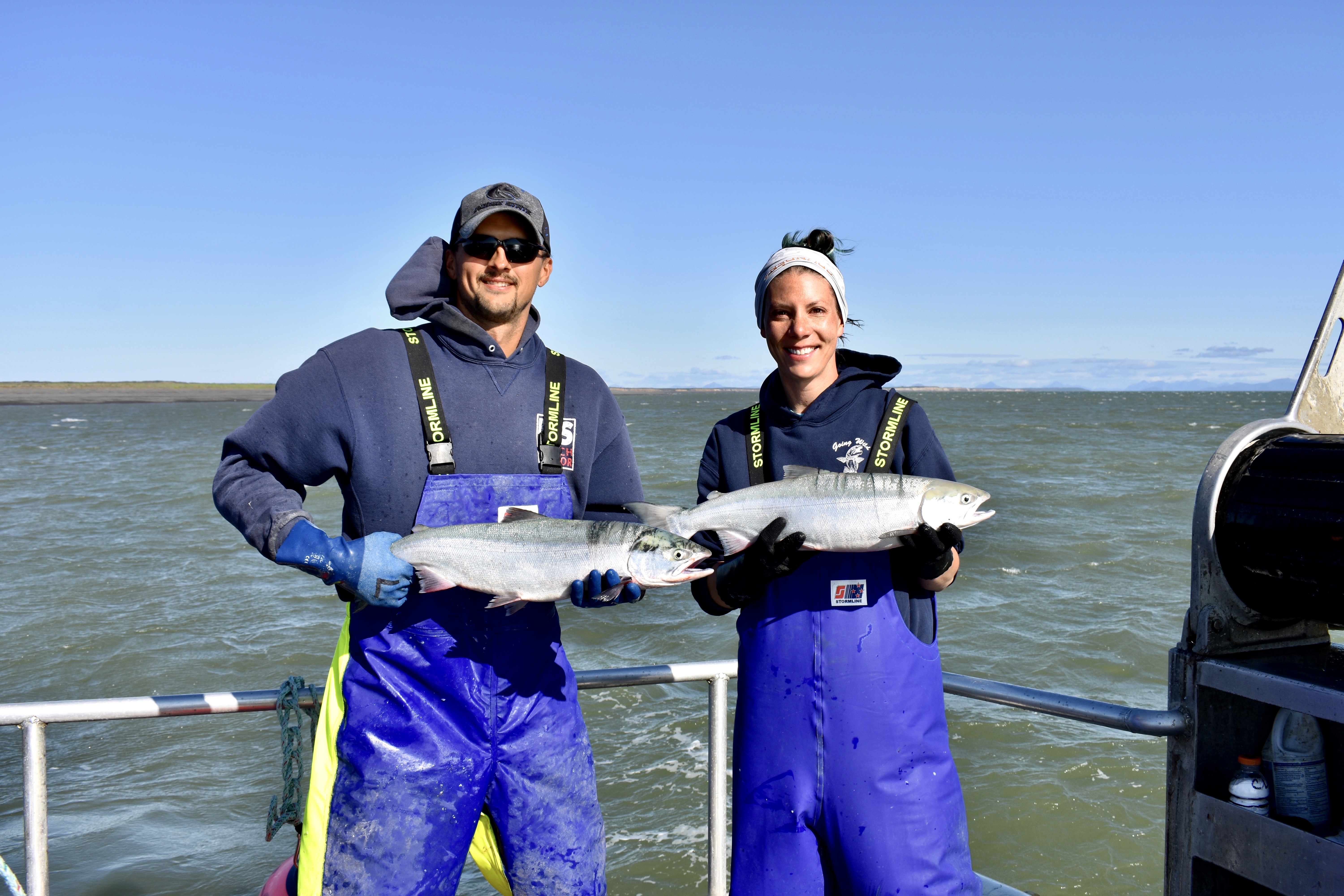A lack of fish in the freezers is an encouraging sign for Alaska salmon as we head into the new year, driven by increasing customer demand. But headwinds from trade disputes and the covid pandemic also loom large on the 2021 horizon.
Those are some prime takeaways shared by Mark Palmer, president and CEO of OBI Seafoods, and Allen Kimball, vice president of global operations and sales for Trident Seafoods.
“We don't see entering the 2021 season with any real big carryovers. And that's always one of the downsides as we head into a new season, if there's an abundance of 2 to 4 (pound) sockeyes or something. We've gone into seasons like that, and it influences the new season pricing. But as we go into 2021, we should have a pretty clean slate and be ready to buy and ideally put it up in a better product form than we did this last year,” said Palmer, speaking at a webinar hosted by United Fishermen of Alaska.
The covid pandemic this year forced a shift from workers producing fresh salmon fillets to lower value canned and frozen fish when the labor force was reduced and costly restrictions were imposed on processing lines.
Kimball added that while he was “a little more conservative,” his outlook was fairly optimistic.
“We don't have inventories around, and we have good demand,” he said. “I think we're going to see a lot of adjustments and positive things in terms of the demand at retail and it's going to continue. And if we get this foodservice piece back to full giddy up, I think it's going to be quite good.”
Nationally, people are buying more seafood at grocery stores than ever before, added Palmer. And while lower in value, all that pack put up by Alaska processors fits the bill.
“The type of seafood they're buying is more canned and frozen products, and that's where we've really seen some great marketshare gains,” he explained. “It's probably one of the best times to be a frozen seller and to get new value added products in the market.”
With covid crippling the foodservice sector, Palmer said farmed fish has flooded into retail outlets and forced a downward press on salmon prices.
“These aquaculture produced salmon had a huge piece of the foodservice market, and as that evaporated, they're still pulling fish out of the water. We've watched that industry go after the retail market more aggressively than they ever have. They've got the fish, and they're going to find someplace to move it. We've watched prices go down, so we're slugging it out every day to keep our products on the shelf,” he said.
Roughly 75 percent of the world’s salmon is now farmed, added Kimball. But both he and Palmer emphasized Alaska’s biggest market competition comes from Russia.
“When we're negotiating with some of our bigger export markets, whether it’s salmon or whitefish, all of these global markets influence that,” Palmer said. “For the last four years, Russia has had these huge production years on pink salmon and solid sockeye and chum production. That's what's really driven the market. Trying to put up product forms where we don't have to directly compete against Russia has been important.”
Both also bemoaned the trade imbalance that allows Russian-caught fish into U.S. markets while that country has not purchased a U.S. pound since 2014.
“Russia has open access to our markets with no restrictions. I just don't understand the fairness of this,” Palmer said. “We would rather just see open markets. We will compete against anyone, but if they're not going to give us access to their market, they shouldn't have unfettered access to ours.”
“If we can't sell our fish in Russia, they shouldn't be able to sell their fish in the United States,” echoed Kimball. “I think that's going to continue to be a battle. We'll have to see with the next administration how that's going to materialize. But I anticipate that we're going to have to be at the table really early and carefully to make sure that we get our voices heard in this particular issue.”
Both Palmer and Kimball said trade wars and currency fluctuations over the past several years have been a nightmare.
Tariff activity since 2018 on various fish ranges between 35 and 45 percent going into China, Kimball said, and a new 35 percent tariff has been imposed on Alaska salmon going to Europe, stemming from a government dispute over airplane subsidies.
“It is going to have an effect on our ability to get wild salmon into the European Union. With that kind of tariff, it's going to make it pretty darn tough,” said Kimball. “But I would say that with many of these tariff challenges, what we've seen in China and other countries, the dynamics of this could change. So we're heavily working on this from a political position standpoint. But if this remains, there is no question it’s going to have a big influence on fish next year.”
The ongoing influence of the covid pandemic also remains a question. Most seafood companies picked up the tab this year to charter planes to transport tens of thousands of processing workers, rent hotel rooms for 14-day quarantines, purchase testing and prevention equipment — costs not reimbursed by federal relief funds. More strict state requirements for preventive protocols are already extended into 2021.
“In fact, they’ve been expanded,” said Kimball. “We are all working with the state on surveying our community work forces and factories at places that operate year round, and we have to go to continuous monitoring of our employees there, including testing. So the handling of the workforce is getting more expensive, not less, as we head into 2021. It's just a big unknown at this point.”







